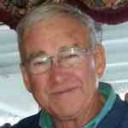Home Page › Forums › Discussion Topics – Ask the Experts › rochester r/rc, jetfire carb pics
- This topic has 4 replies, 2 voices, and was last updated 9 years, 9 months ago by
 JimNoel.
JimNoel.
-
AuthorPosts
-
July 17, 2014 at 1:32 am #10648
 young_oldsParticipant
young_oldsParticipantI just picked up a jetfire carb and im looking to pictures to cross reference with my carb to see how much im missing, mostly lines and where they are supposed to go. also what is the minimum needed for the carb to function? it wont be used in a stock jetfire application
July 18, 2014 at 10:54 am #10649 young_oldsParticipant
young_oldsParticipantIm hoping to see pictures from all angles so i can see where lines run and what pieces are where.
July 22, 2014 at 5:45 pm #10651 JimNoelParticipant
JimNoelParticipantIt would be easier if I knew just what you want to do? All you need to make the carb function is supply fuel. If you are NOT going to use the Turbo Rocket Fluid injection system or boost control parts, then you will need to block all the ports on the carb and throttle body, including the water preheat lines going to the throttle body. You will need to “hold open” the boost limit butterfly valve in the throttle body too. If needed, you can keep two vacuum ports open, one for the distributor vacuum advance and one for the PCV valve operation. Seal all other ports and the carb/throttle body will supply fuel/air to make an engine run, depending on just how you attach this contraption to the intake manifold?
There are pics of the carb/throttle body in the Jetfire Supplement book and the 1963 Olds Service Manual.July 22, 2014 at 9:29 pm #10652 young_oldsParticipant
young_oldsParticipantI found a pdf copy of the jetfire supplement, with direction from jensenracing. It helped a lot on figuring out where a lot of things went and what things do. Are those larger lines for coolant to run through? those are about the only things i havent figured out yet. As far as attaching it to the intake, I plan on having a turbo in between the two.
July 23, 2014 at 7:35 am #10653 JimNoelParticipant
JimNoelParticipantYes, the large brass lines are for engine coolant to run through the throttle body. The coolant also runs through the compressor housing side of the turbo unit. The factory stock turbo engine has 10.25 to 1 compression ratio and needed a method to reduce pre-ignition caused by the piston tops and heads getting too hot under boost. Modern day turbo cars can accomplish this by retarding the spark with a computer controlled distributor. For the 60’s Jetfire cars this was accomplished by the water/methanol injection technique. You will need to address this issue with your modifications to a Jetfire engine to keep from burning holes in the piston tops. To understand the function of the safety systems put on by Oldsmobile, see this article on this website: http://oldsjetfire.com/turbo-system-safety-checks/
-
AuthorPosts
- You must be logged in to reply to this topic.



